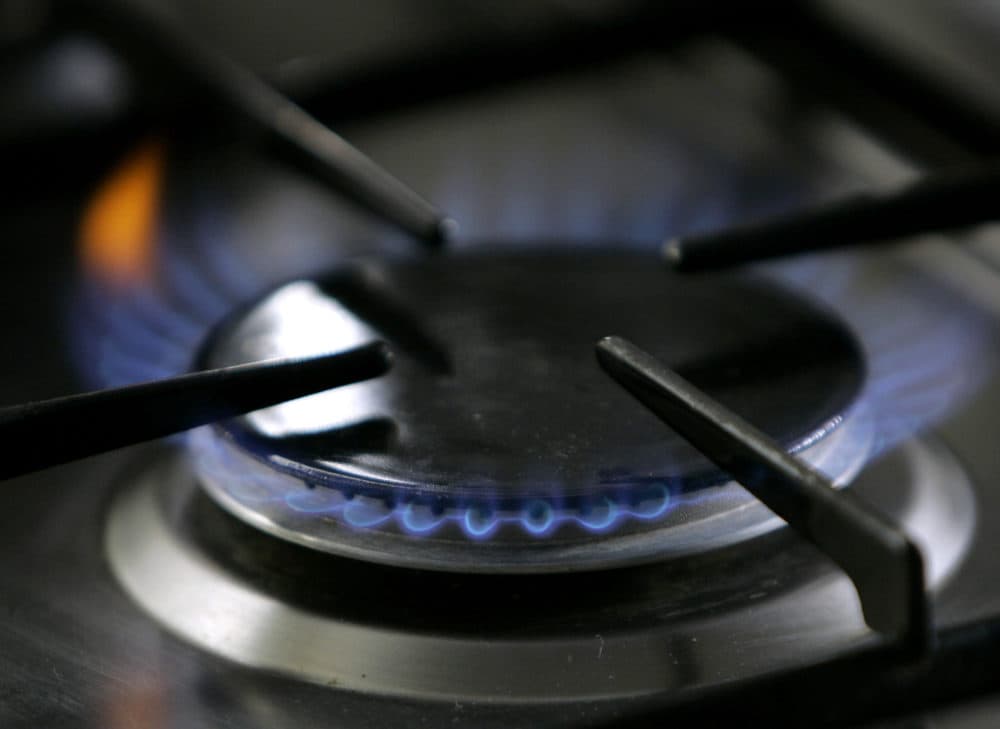Advertisement
Study links gas stoves to 50,000 current cases of childhood asthma

Air pollution from gas and propane stoves has caused about 50,000 current cases of childhood asthma nationwide, and people living in smaller homes are more likely to be affected. That’s according to a new study released Friday from researchers at Stanford and Harvard Universities.
The study looked specifically at nitrogen dioxide, which is emitted by gas and propane stoves when the burners are on. The pollutant can trigger asthma, coughing, wheezing and other health problems.
“Not only can it make asthma worse, it can actually cause new cases, especially in children,” said Kari Nadeau, chair of the department of Environmental Health at the Harvard T.H. Chan School of Public Health and co-author of the study.
Nadeau, who is also a physician at Beth Israel Deaconess Medical Center, said that the estimate of 50,000 asthma cases is “conservative,” since the study only considered one of several pollutants emitted by gas and propane stoves. When considering other pollutants, such as carbon monoxide, “the full impact may be closer to 200,000 cases,” she said.
The study also found that people living in residences smaller than 800 square feet experienced four times more long-term exposure to nitrogen dioxide than people living in residences larger than 3,000 square feet. American Indian and Alaska Native households incurred 60% more exposure than the national average, according to the study. Exposure in Black and Hispanic households was 20% higher.
Researchers have known about the connection between gas stoves and indoor air pollution for decades, said Jonathan Levy, chair of the environmental health department at the Boston University School of Public Health. But he said the new research helps quantify the effects and "reinforces that there are appreciable indoor air quality and health risks associated with gas stove use."
Marcos Luna, a professor of geography and sustainability at Salem State University, said the study’s results were “striking.”
“These short term exposures are really high,” said Luna, “higher than what you would get if you were standing in the middle of Boston's Kenmore Square.”
Luna co-authored a 2022 study finding that people of color, lower-income households and people with limited English skills across Massachusetts are more exposed to gas leaks than the general population. Those same communities also wait longer to get leaks fixed.
He said this new research re-affirms that communities of color and lower income communities face an “unequal burden” from environmental pollutants. “That level of inequality is something we're just beginning to grapple with.”
The Environmental Protection Agency does not regulate indoor air pollution, even though Americans spend about 90% of their time indoors, according to the EPA.
“The [outside] air that we breathe is cleaner today than it was when I was a child, and that's a result of policy and fuel switching,” said Robert Jackson, a professor in the department of earth system science at Stanford University, who led the study. “But we have ignored and not taken into account risks that people face indoors.”
Public health experts have raised increasingly urgent concerns about gas stove use in recent years. A 2022 study found 21 hazardous air pollutants in unburned natural gas sampled from homes across Greater Boston. The same study found benzene, a carcinogen, leaking from 95% of gas stoves sampled. And research has shown gas stoves can leak pollutants even when they’re off.
A 2017 study from the Massachusetts Department of Public Health found gas stove use was the top trigger for pediatric asthma in the state; the American Public Health Association calls gas cooking stoves "a public health concern.”
About 38% of households nationwide, and 44% of households in Massachusetts, use a gas stove for cooking, according to the U.S. Energy Information Administration.
Experts recommend venting stovetop emissions outside or opening windows while cooking to lower exposure from gas and propane stoves. Nadeau also recommends keeping children, elderly people and people with asthma away from the stove while cooking, and said that she wears an N95 mask when using a gas stove.
Several states, including Illinois and California, have proposed legislation that would require warning labels on gas stoves.
Luna said the new research also supports local and national policies attempting to wean consumers off fossil fuels in cars and buildings, since the burning fuel emits greenhouse gases that cause global warming. Massachusetts, for instance, has a pilot program allowing a handful of communities to ban fossil fuels hookups in new construction.
“We're already on track to be reducing our use of gasoline, our natural gas in the state,” Luna said. “I think what we're finding is there's lots of reasons to do that now.”
